Hibla ng Lahing Filipino Travelling Exhibition goes to Japan! (Yohana Frias, ITP 2018, Philippines)
Written by Yohana Frias, Museum Researcher: Ethnology Department, National Museum of the Philippines (ITP 2018, Philippines)
On 8 March 2019, the National Museum of the Philippines, in partnership with the Office of Senator Loren Legarda, Embassy of the Republic of the Philippines in Tokyo, and ASEAN-Japan Centre, launched the first of the 2019 Hibla ng Lahing Filipino Travelling Exhibition, Lecture Series, Weaving Demonstrations and Embroidery Workshops in Tokyo, Japan.
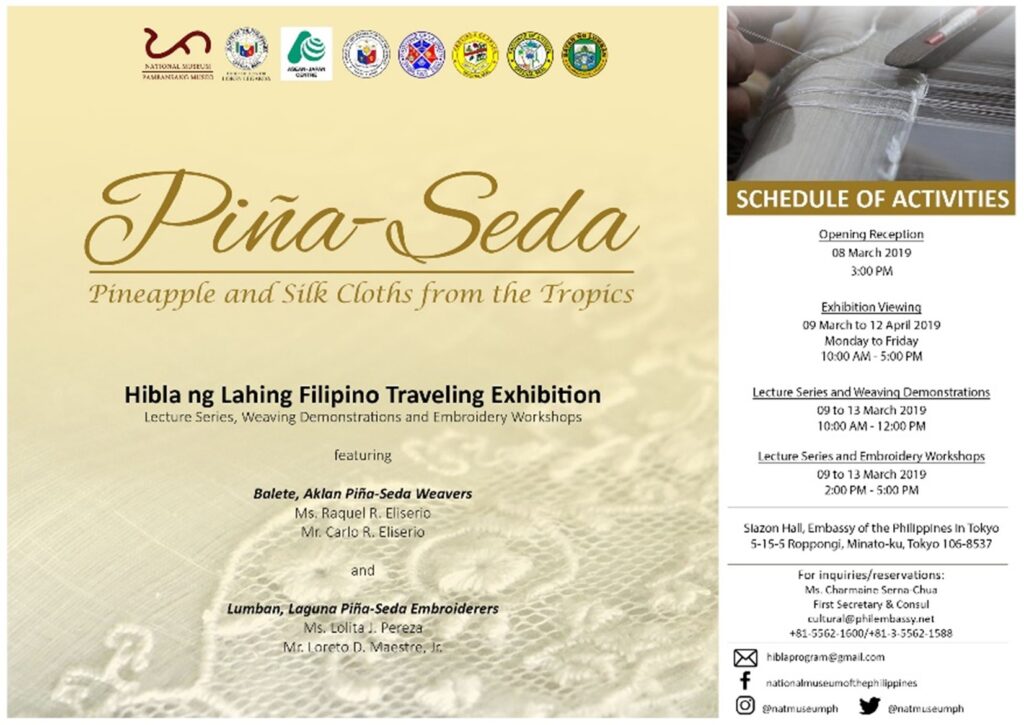
In this exhibition, we featured textiles made of piña-seda fibers – piña, the Spanish term for pineapple; and seda for silk. It aims to create awareness and appreciation for the artistry of Philippine textiles and to reach a global audience including Filipinos overseas and international textile researchers and enthusiasts.
The piña-seda travelling exhibition, lectures, demonstrations, and workshops had already been to different cities since 2017 – in London, Lisbon, Madrid, Frankfurt, Washington, D.C., New York, Hawaii, and recently in Tokyo.
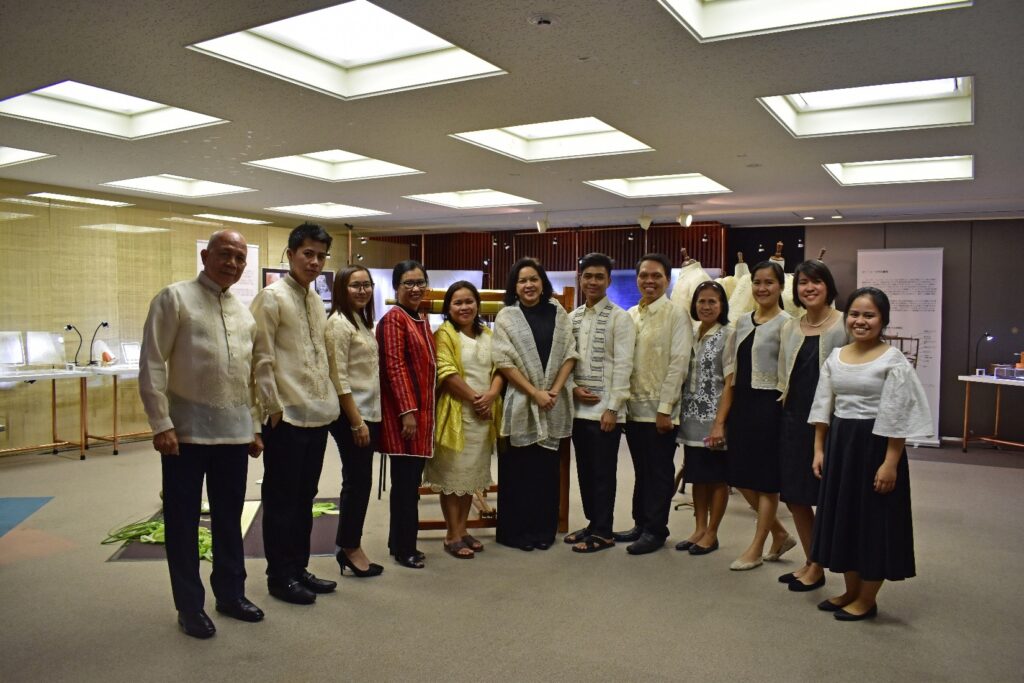
Ever since I fell in love with Japanese culture back in high school, I had always dreamt of going to Japan. I never imagined that my first time there would be as part of the Philippine delegation that travelled to Tokyo to carry out an exhibition programme.
The road to the launch was long and tedious – our team at the National Museum Ethnology Division prepared collections for display, and all the correspondence and logistics (requisitions, visas, permits, airfare, accommodation, etc.) while the Museum’s Exhibition, Editorial, and Media Production Services Division prepared and constructed the display systems for the exhibition.
With us were our expert piña-seda embroiderers and weavers from the provinces of Aklan and Laguna in the Philippines. As resource persons who also conducted lectures, weaving and embroidery demonstrations and workshops, we wanted them to share their experiences and interact directly with visitors. In this way, at least for a short period of time while we were in Tokyo, the exhibition was ‘alive’. Their presence in the exhibition is a reminder to visitors that it is them, the artisans, who must be the centre of attention because they continue to breathe life into the traditions of textile weaving and embroidery.
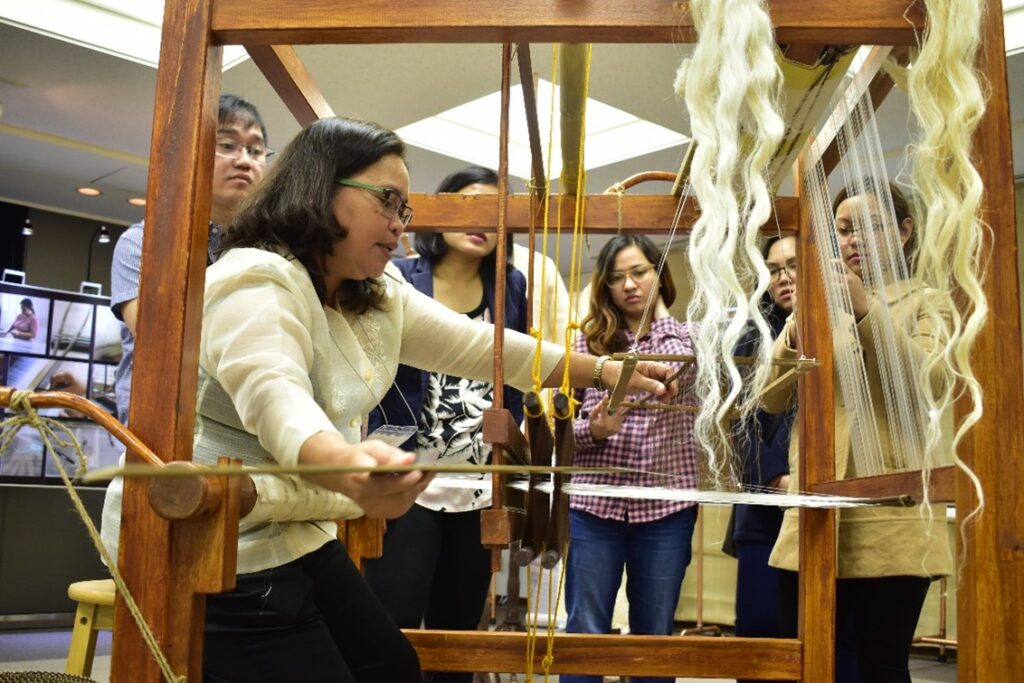

Piña-seda weaving and scraping demonstration by Ms. Raquel Eliserio (L) and her son Mr. Carlo Eliserio (R).


Piña-seda embroidery workshop by Ms. Lolita Pereza (L) and Mr. Loreto Maestre, Jr. (R).
When it came to the exhibition materials, the display system had to be light and durable to make it cost efficient, and easy to install and dismantle. It became part of the exhibition’s trademark to use copper pipes as the primary component of these systems, being light and having a good finish when polished.


The base of our hanger rack (L) is made up of pieces of copper pipes (R), wood and metal bars painted in white.


We made foam rolls (L) for the display of the textiles on the hanger rack (R).
All materials were packed in various boxes, subjected to inspection from the customs officer, and checked in as excess baggage. Aside from our own luggage, we carried a total of 20 checked-in boxes during our travel from Manila to Tokyo.


The copper pipes inside the box are properly labelled and covered in glassine paper to prevent hand and finger prints leaving marks on their polished surface (L). We looked like we were moving our whole house because of the 20 boxes we brought with us to the airport! (R)
Upon arrival in the afternoon of 5 March, we brought the exhibition materials to the Philippine Embassy before starting the installation the following day. Assembling the tables and display cases was an interesting experience because it reminded me of building Lego™ bricks! After the display cases, the installation of the collection came next. The textiles were steam-ironed and hung in their respective display areas, while the sample fibres were placed inside their polished cases made of plexiglass. To separate the exhibition space from the lecture and workshop area, we installed blinds made of buri raffia (Corypha) between the areas.
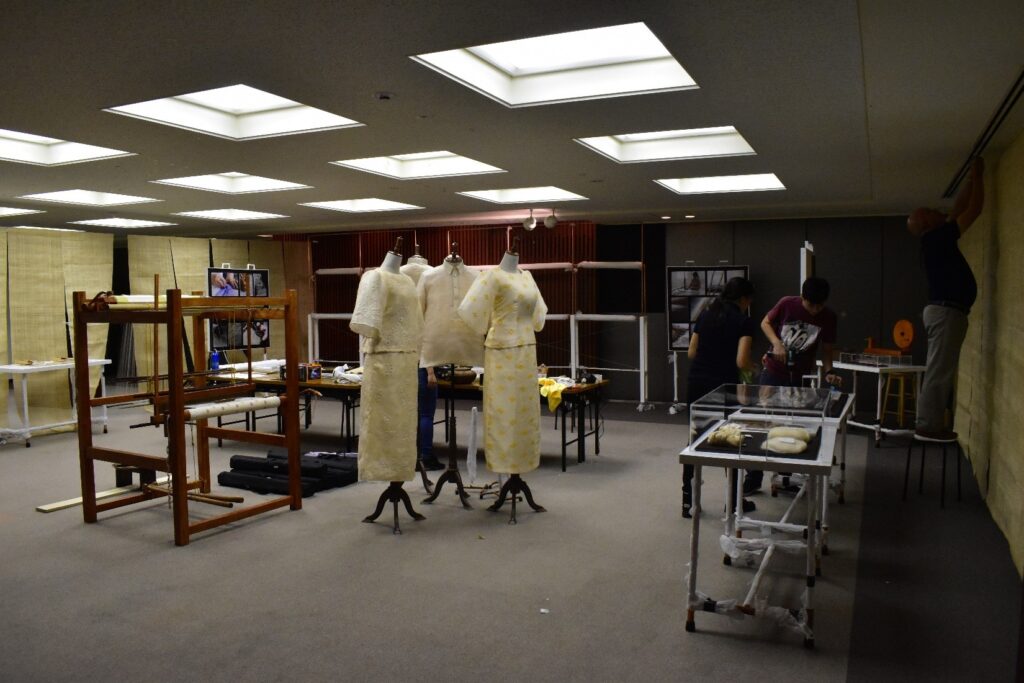
After two days of ingress, we successfully opened the exhibition on 8 March 2019.


ASEAN-Japan Centre Secretary General Masataka Fujita, H.E. Jose C. Laurel V, Ambassador of the Republic of the Philippines to Japan, and Assistant Director Ana Maria Theresa Labrador, PhD of the National Museum of the Philippines (L). During the preview of the exhibition (R).


For the next four days, we conducted the lectures, weaving demonstrations, and embroidery workshops.
One challenge we experienced was the language barrier. Since we conducted the program in English, we asked for the assistance of the Embassy’s Japanese translator. My little knowledge in the Japanese language somehow – and surprisingly – helped me in assisting some Japanese participants in the workshops.

The travelling exhibition at the Philippine Embassy in Tokyo, Japan is open for public viewing until 12 April 12 2019. This year, the Hibla ng Lahing Filipino Travelling Exhibition is planned to launch in Asia, Europe and the Americas particularly in Bangkok, Singapore, San Francisco, Argentina, Mexico, Berlin, Prague and Geneva.
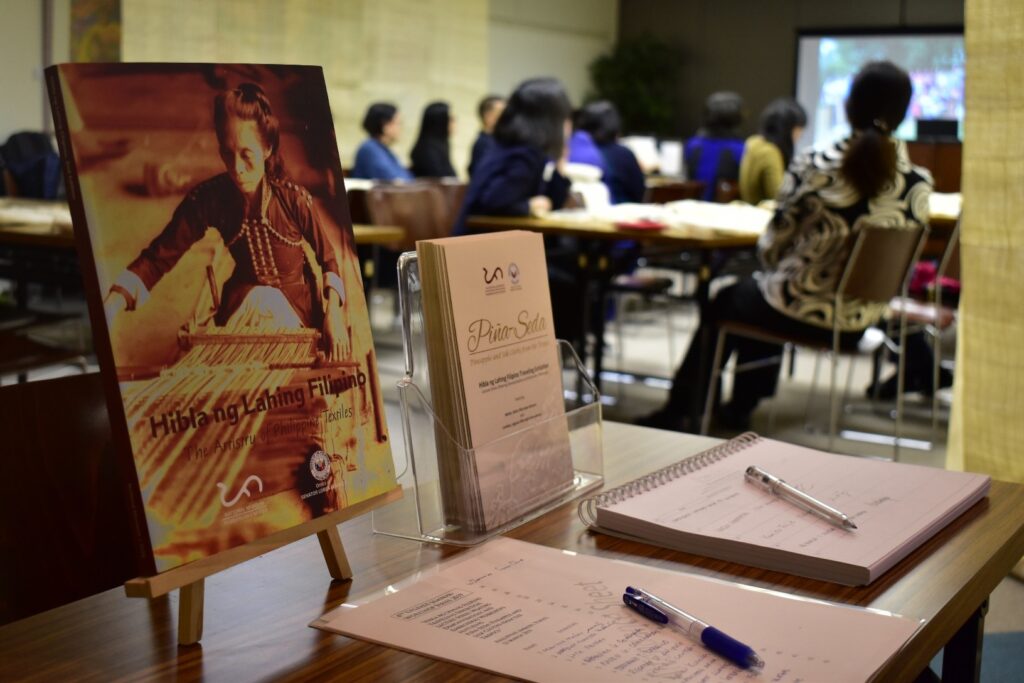
Visit the National Museum of the Philippines Facebook Page for news of our upcoming schedules of the Hibla ng Lahing Filipino Travelling Exhibition and other events.
Yohana
